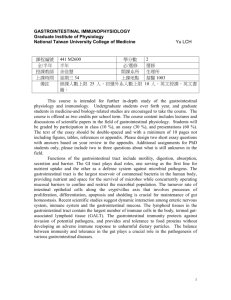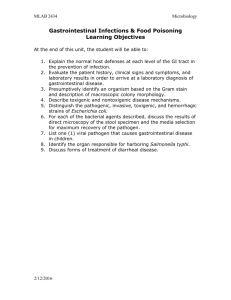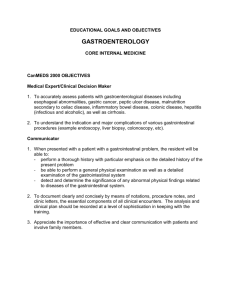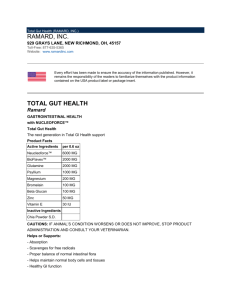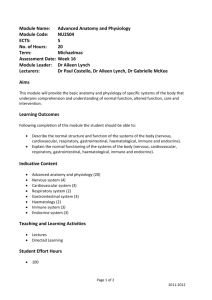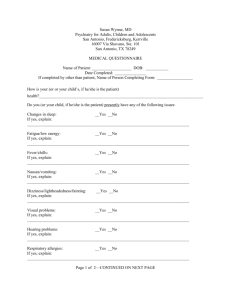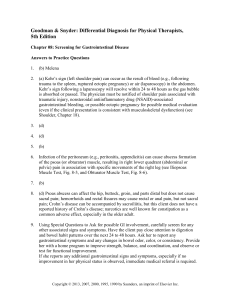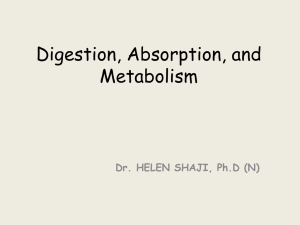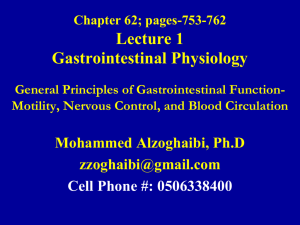veterinary gastrointestinal physiology and immunology
advertisement
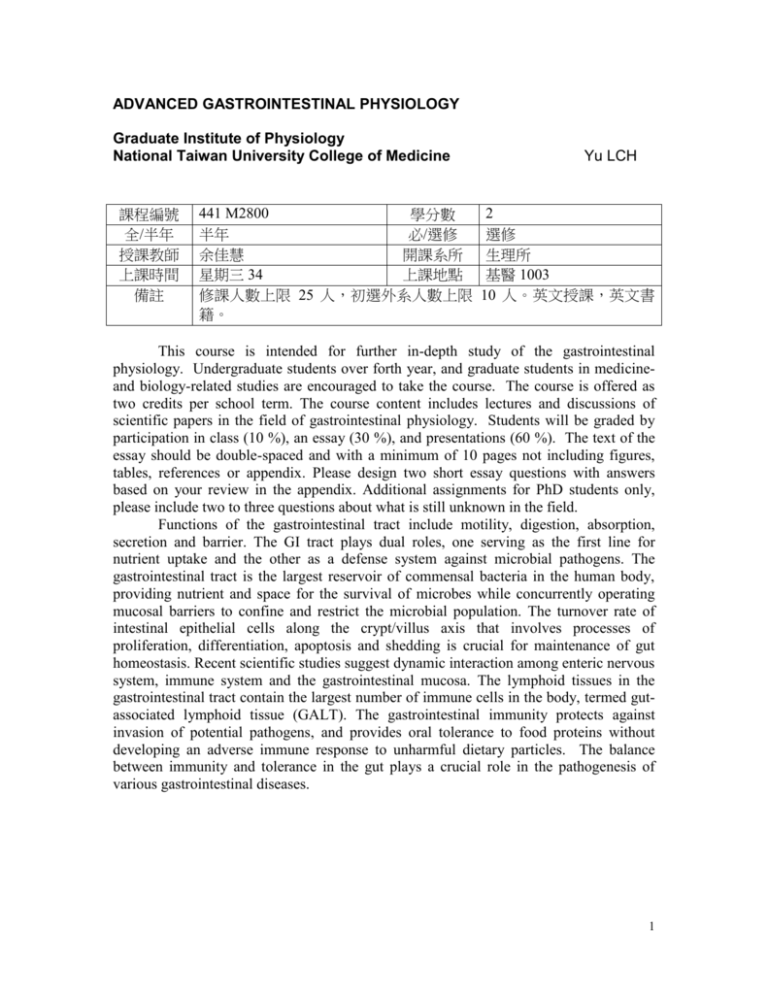
ADVANCED GASTROINTESTINAL PHYSIOLOGY Graduate Institute of Physiology National Taiwan University College of Medicine 課程編號 全/半年 授課教師 上課時間 備註 441 M2800 學分數 半年 必/選修 余佳慧 開課系所 星期三 34 上課地點 修課人數上限 25 人,初選外系人數上限 籍。 Yu LCH 2 選修 生理所 基醫 1003 10 人。英文授課,英文書 This course is intended for further in-depth study of the gastrointestinal physiology. Undergraduate students over forth year, and graduate students in medicineand biology-related studies are encouraged to take the course. The course is offered as two credits per school term. The course content includes lectures and discussions of scientific papers in the field of gastrointestinal physiology. Students will be graded by participation in class (10 %), an essay (30 %), and presentations (60 %). The text of the essay should be double-spaced and with a minimum of 10 pages not including figures, tables, references or appendix. Please design two short essay questions with answers based on your review in the appendix. Additional assignments for PhD students only, please include two to three questions about what is still unknown in the field. Functions of the gastrointestinal tract include motility, digestion, absorption, secretion and barrier. The GI tract plays dual roles, one serving as the first line for nutrient uptake and the other as a defense system against microbial pathogens. The gastrointestinal tract is the largest reservoir of commensal bacteria in the human body, providing nutrient and space for the survival of microbes while concurrently operating mucosal barriers to confine and restrict the microbial population. The turnover rate of intestinal epithelial cells along the crypt/villus axis that involves processes of proliferation, differentiation, apoptosis and shedding is crucial for maintenance of gut homeostasis. Recent scientific studies suggest dynamic interaction among enteric nervous system, immune system and the gastrointestinal mucosa. The lymphoid tissues in the gastrointestinal tract contain the largest number of immune cells in the body, termed gutassociated lymphoid tissue (GALT). The gastrointestinal immunity protects against invasion of potential pathogens, and provides oral tolerance to food proteins without developing an adverse immune response to unharmful dietary particles. The balance between immunity and tolerance in the gut plays a crucial role in the pathogenesis of various gastrointestinal diseases. 1 ADVANCED GASTROINTESTINAL PHYSIOLOGY Graduate Institute of Physiology National Taiwan University, College of Medicine Yu LCH Introduction 1. Gastrointestinal histology, and physiology Digestion and absorption: 2. Brush border enzymes: disaccharidases and peptidases 3. Nutrient transporters: sodium-dependent glucose and amino acid transporters, GLUTs, di/tripeptide transporter PEPT1 Secretion: 4. Anion secretion: chloride and bicarbonate ions 5. Mucus secretion Motility and neural regulation, brain-gut axis: 6. Bowel distension, intestinal transit, and pain perception 7. Brain-gut axis Barrier function: 8. Chemical barrier function: defensin and cathelicidin 9. Physical barrier function: tight junctions and epithelial permeability Crypt-villus axis 10. Epithelial cell apoptosis/proliferation and carcinogenesis 11. Crypt stem cell proliferation Commensals and probiotics 12. Gut commensal bacteria and enteric dysbiosis 13. Symbonts/Probiotics and gut immunity Intestinal innate immunity: neutrophils and macrophages 14. Intestinal macrophages: phagocytes, activation vs. anergy Intestinal adaptive immunity and Gut-associated lymphoid tissue (GALT) 15. Peyer’s patches and isolated lymphoid follicles Oral tolerance 16. Immune suppression and Treg cells 2
